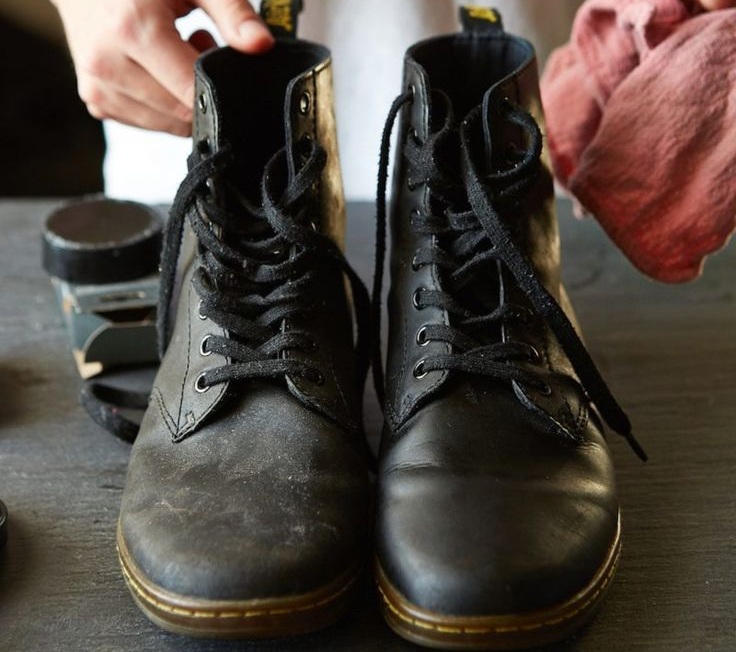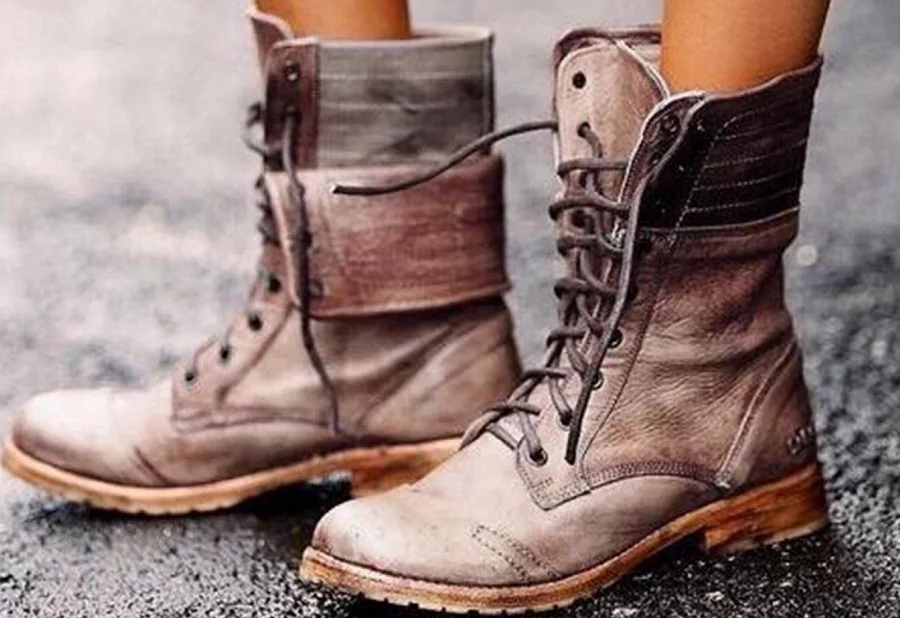Your leather shoes (especially full-grain or top-grain) can easily become the envy of every hallway you walk, turning heads with their rich patina and unmistakable quality. But even the finest leather pair can lose its appeal because of the small things you do (or don’t do) day after day without thinking twice.
Leaving shoes laced too tight to ‘hold their shape,’ skipping a cedar shoe tree ‘just this once,’ or using whatever polish is handy ‘because it’s quick’ — all harmless in the moment but cause damage over time. So if your goal is lasting style and enduring quality, you’ll want to pay attention to these next five habits.
01 | Wearing the Same Pair Every Day Without Giving Them Time to Rest
Wearing your leather shoes day in and day out may feel efficient, but it’s actually one of the fastest ways to wear them out. Leather is a natural material that absorbs moisture, including sweat from your feet, and it needs time to fully dry between uses.
When you wear the same pair daily, moisture builds up inside the lining, weakening the leather’s structure and encouraging odor, creasing, and cracking. Over time, the soles start to lose shape, and the upper begins to look worn, no matter how well you try to polish it. Giving your shoes a rest is just as important as cleaning them.
Let’s go over the best ways to build a simple shoe rotation routine, even if you only own a few pairs:
- Allow at least 24–48 hours of rest between wears. After a full day of wear, give your shoes one to two days to air out and recover. This helps moisture evaporate from the lining and gives the leather a break from stress.
- Invest in at least two pairs for your weekly routine. If you wear leather shoes to work every day, rotate between two pairs to reduce constant strain. You’ll dramatically increase their lifespan.
- Use cedar shoe trees after every wear. These help absorb residual moisture and maintain the shoe’s shape while it rests. It’s a low-effort, high-reward habit.
02 | Skipping Regular Cleaning and Conditioning After Use
Even if your leather shoes look clean, they pick up invisible dirt, body oils, and sweat every time you wear them. Over time, this grime breaks down the finish and dries out the material. So skipping basic upkeep is like never moisturizing your skin — it starts to look dull, acquires cracks, and ages faster.
Conditioning restores the oils leather naturally loses and protects it from becoming brittle. A simple cleaning and conditioning routine takes less than ten minutes and can save you from costly restoration later.
Here’s how to handle basic maintenance, even if you’ve never cleaned leather before:
- Wipe your shoes with a soft cloth after each wear. This removes surface dirt and helps you avoid buildup. You don’t need to polish daily — just a quick dust-off does the trick.
- Clean with a leather-specific cleaner once a week. Avoid all-purpose cleaners or baby wipes. Instead, use a pH-balanced leather cleaning agent that’s made to protect rather than strip.
- Condition the leather monthly, or more often in dry climates. Use a dedicated leather conditioner to restore moisture and keep the material supple. Think of it like lotion for your shoes — it prevents cracking and keeps the color vibrant.
03 | Storing Your Shoes in Dark, Damp Spaces Without Ventilation or Support
Where and how you store your shoes play a major role in their condition. Tossing them into a closet corner or leaving them under your bed without support leads to misshaping, mold growth, and premature aging.
Leather needs airflow and structure when it’s not being worn. Dark, humid environments encourage mildew and soften the leather, making it easier for cracks and stains to form. Proper storage isn’t complicated, but it does take a little intention.
If you want your leather shoes to stay sharp between wears, here’s how to store them properly:
- Always use shoe trees or crumpled acid-free paper. This helps the leather hold its shape and prevents creasing, especially around the toe box.
- Store shoes in a breathable cotton or muslin bag. Avoid plastic bags or sealed boxes because they trap moisture and create a breeding ground for mold and odors.
- Keep them in a dry, temperature-stable area. Avoid storing shoes near heating vents or in damp basements. Aim for a cool, dry space with minimal humidity and good airflow.
04 | Walking Through Dirt, Grass, or Wet Areas Without Wiping Them Down Afterward
It’s easy to assume your leather shoes can handle a walk through a grassy park or a drizzle on the sidewalk. But dirt, soil, and moisture all speed up the breakdown of leather when left untreated. These elements seep into the surface, wearing away at the protective finish and staining the leather from the inside out. What looks like a harmless walk can cause permanent damage if you don’t clean them afterward. Yes, prevention is great, but quick cleanup is even better.
What to Do After Exposure to Dirt or Water
When your shoes take a hit outdoors, here’s how to respond quickly and protect the leather:
- Wipe down with a dry, clean cloth as soon as possible. This removes surface dirt before it gets absorbed. If the leather is damp, blot gently, never rub.
- Let the shoes air dry at room temperature. Don’t use direct heat like a hair dryer or heater. It can cause the leather to harden and crack.
- Use a suede brush or eraser for nubuck and suede finishes. These materials need specific tools to lift dirt without damaging the texture.
05 | Using Harsh Household Cleaners or Wipes Not Made for Leather

When you’re in a hurry, reaching for a kitchen cleaner or antibacterial wipe might feel like a quick fix, but it’s a big mistake. Most household cleaning products are too harsh for leather and contain chemicals that strip its natural oils and dyes. That includes things labeled “multi-surface” or “disinfectant.” These cleaners dry out leather, fade the color, and leave behind residue that’s hard to reverse. If you wouldn’t use it on a leather jacket or handbag, don’t use it on your shoes.
Here’s how to clean your leather shoes the right way, without risking permanent damage:
- Stick to leather-specific products. Look for cleaners and conditioners formulated for smooth or suede leather. They’re pH-balanced and safe for repeated use.
- Avoid anything with alcohol, bleach, or ammonia. These chemicals break down the leather’s surface and lead to cracking and discoloration. Read the label. If you see these ingredients, skip them.
- Test any new product in a small, hidden area first. Even safe products can react differently based on dye or finish. Always test before applying it across the entire shoe.
For Generations of Quality Leather Care, Trust Faulkner’s Dry Cleaning and Laundry!
Looking polished means caring for every part of your wardrobe, and that includes your leather shoes. At Faulkner’s Dry Cleaning and Laundry, we have leather cleaning specialists who understand the delicate balance of maintaining the beauty and suppleness of your leather and suede shoes and clothing pieces.
When it’s time for cleaning, repair, or even careful restoration, Faulkner’s Dry Cleaning and Laundry is your trusted resource right here in Dallas and the surrounding neighborhoods. We’re a full-service dry cleaning company combining state-of-the-art equipment, modern techniques, and genuine care to ensure your leather and suede shoes and garments remain elegant, vibrant, and timeless.
Wondering if our methods are environmentally friendly? Absolutely! Every Leather and Suede Cleaning Service is performed using eco-safe Ecosolve for a cleaner, greener result.
Visit Faulkner’s Dry Cleaning and Laundry today at 4225 Oak Lawn Avenue, Dallas, Texas, 75219, and experience why generations have counted on us to protect what they wear best. You may also send us a message using our online contact form.

